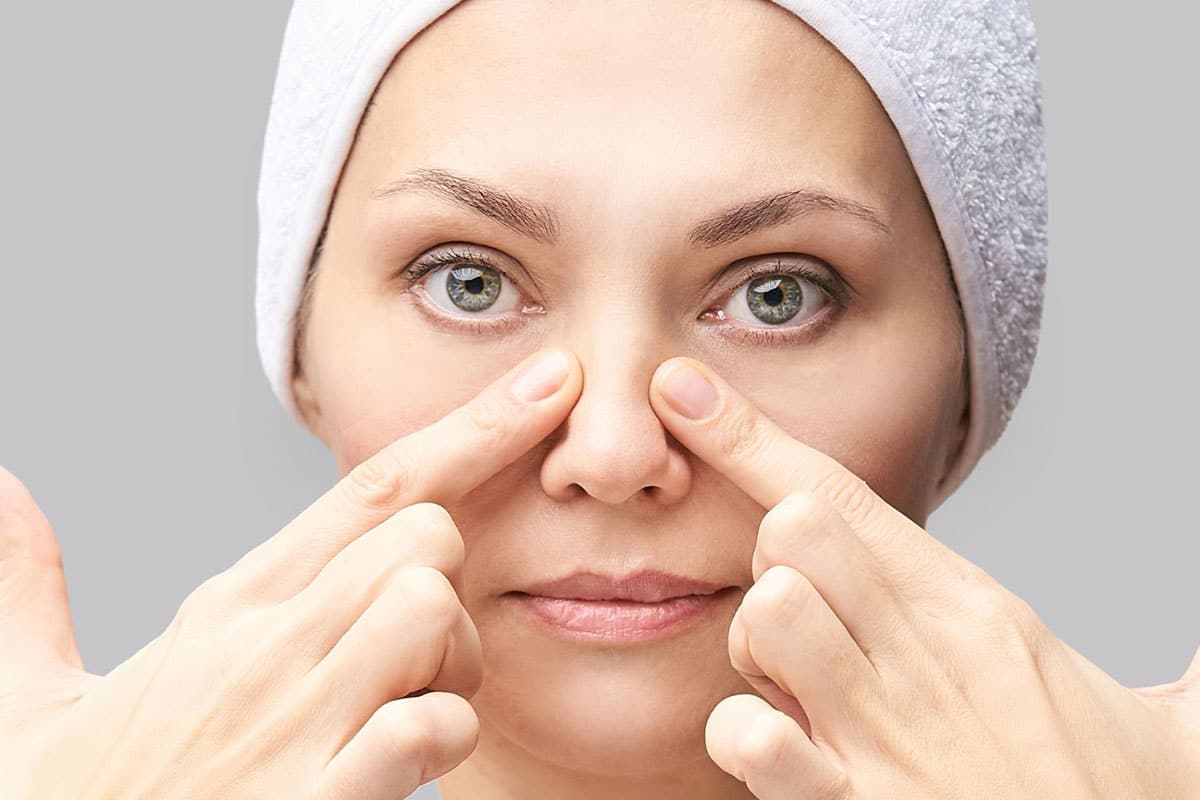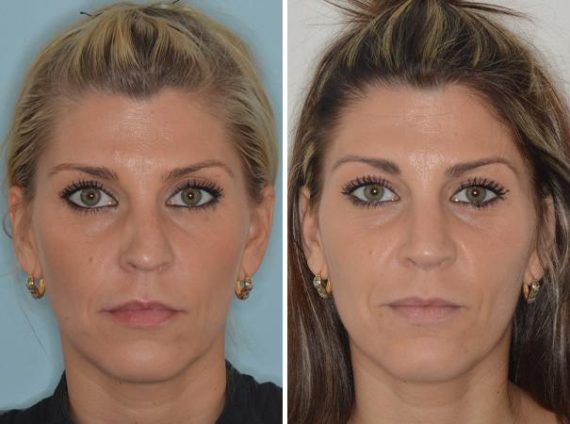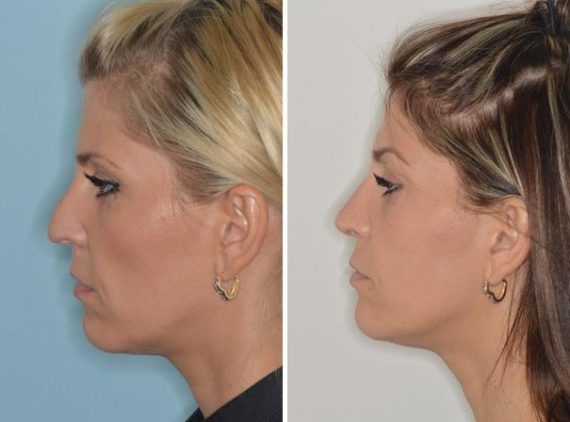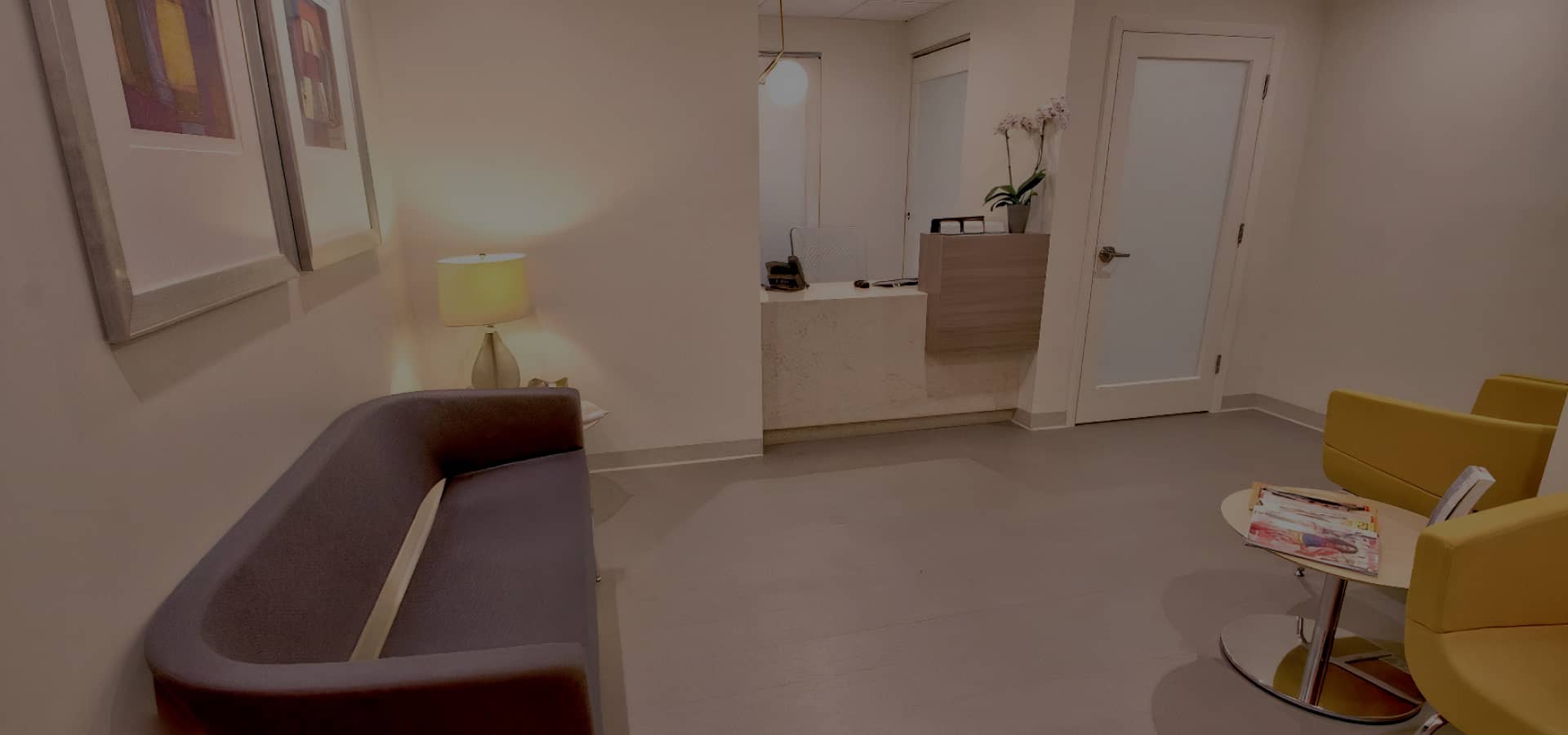Are you tired of dealing with the aftermath of a botched nose job? Do you dream of having a beautifully sculpted nose that not only enhances your appearance but also improves your nasal function? Look no further – rib graft revision rhinoplasty is here to save the day! In this blog, we will delve into the incredible results achieved through this innovative technique, highlighting its ability to transform both aesthetics and functionality.
Optimal Results with Rib Graft Revision Rhinoplasty
Achieving the best possible outcomes in revision rhinoplasty surgery hinges on meticulous planning and the expertise of the surgeon, especially when rib grafts are involved. Rib cartilage rhinoplasty offers a robust option for patients requiring substantial structural support after an initial surgery. For the nose to maintain its function and enhanced nasal appearance, the integration of the graft must be precise.
Patients should set realistic expectations, understanding that revision procedures with rib grafts aim to correct both functional issues and aesthetic concerns. Surgeons need to communicate what is achievable, taking into account the limitations set by the previous surgery and the patient’s unique anatomy.
Using rib grafts, surgeons replenish what septal cartilage and other internal structures may lack after an initial rhinoplasty. This approach can provide the necessary framework to not only restore but also to refine the nose’s shape and functionality. The graft material must be sculpted and positioned with the utmost skill to blend seamlessly with the existing tissues, ensuring a natural and successful outcome.
Patients can anticipate an effective resolution to both the form and function of their nose when entrusting their revision rhinoplasty to a proficient and skilled surgeon. By employing rib grafts judiciously, the surgeon has the opportunity to deliver transformative and long-lasting results that align with the patient’s vision for their nasal appearance.
Surgical Steps in Rib Graft Revision Rhinoplasty
The revision rhinoplasty procedure begins with harvesting the rib graft. We prioritize safety and minimize pain by carefully removing a small piece of cartilage from the ribcage. Through a discreet incision, the nose cartilage is shaped appropriately before it’s introduced to correct deformities from the primary surgery or provide additional structural support.
Here are the main steps of the surgery:
- Creation of small, precise incisions to access the underlying nasal structure
- Careful removal of scar tissue or remnants from the previous rhinoplasty procedure
- Precise shaping and placement of the rib graft to restore or enhance the nasal framework
- Re-draping of the nasal skin and tissue over the new structure
- Securing the reconstructed nose and closing incisions with meticulous suturing techniques
Aesthetic and Functional Outcomes of Rib Graft Revision Rhinoplasty
Aesthetic Improvements and Patient Satisfaction
The pursuit of aesthetic enhancements through rhinoplasty often leads patients to seek revision procedures to refine their results. Rib graft revision rhinoplasty provides these individuals with tailored corrections that meticulously address the subtle complexities of the nose’s shape and appearance. The use of a rib graft allows plastic surgeons to sculpt the nasal dorsum and restore symmetry, leading to significant improvements in the nose’s contours. This level of customization generally leads to higher levels of patient satisfaction, as revision rhinoplasty patients report improved confidence in their appearance after undergoing the procedure.
Functional Outcomes of Nasal Reconstruction
Beyond aesthetic improvements, rib graft revision rhinoplasty serves a crucial role in resolving functional issues within the nasal structure. Patients often experience relief in areas such as nasal obstruction, with the graft providing the necessary support to open airways and correct breathing difficulties. The structural integrity restored through this technique enhances the nose’s functionality, directly benefitting those who previously suffered from compromised nasal function. The careful balance between facial plastic surgery and functional correction is evident in the outcomes, with a significant number of revision rhinoplasty patients reporting marked improvements in their day-to-day breathing and overall nasal performance.
While discussing the surgical outcomes of rib graft revision rhinoplasty, it’s important to consider that revision rhinoplasty costs can be a significant factor for many patients. However, the combined aesthetic and functional benefits often justify the expense, emphasizing the value of selecting a surgeon with extensive experience and capable of executing such a complex procedure. The graft itself plays a pivotal role in enabling precise and lasting corrections, underscoring the transformative potential of rib graft revision rhinoplasty.
Progress in the First Week Following Rib Cartilage Revision Rhinoplasty
As we delve into the transformative journey of rib graft revision rhinoplasty, it’s crucial to understand the week-long progress post-surgery. This period is pivotal in setting the foundation for healing and long-term success.
Initial Days: Managing Expectations and Discomfort
The first few days after surgery are marked by rest and recovery. Patients may experience swelling and bruising, which are normal responses of the body to the surgical intervention. Pain management is a key focus, with prescribed medications helping to alleviate discomfort. Patients need to keep their heads elevated and avoid any strenuous activities during this phase.
Mid-Week: Observing Changes and Ensuring Care
Around the third or fourth day, patients often notice a reduction in swelling. This is a critical time for monitoring any changes or complications. Adhering to the surgeon’s aftercare instructions, including cleaning protocols and medication schedules, is paramount. Patients are encouraged to engage in light, non-strenuous activities to promote blood circulation, aiding the healing process.
End of the Week: A Glimpse into the Future
By the end of the first week, patients typically return for a follow-up appointment. This visit allows the surgeon to assess the healing progress and the integration of the rib graft. It’s also an opportunity for patients to discuss any concerns and get a glimpse of their emerging new nasal contours. Although the final results are still months away, this milestone often brings a sense of excitement and anticipation for the transformative outcomes ahead.
Navigating Potential Complications and Enhancing Results
Common Risks Associated with Rib Grafts
Rib grafts in rhinoplasty present specific risks such as the risk of infection, complications from tissue harvesting, and scar tissue formation. These issues stem from the complex nature of harvesting rib tissue and its integration into the nasal structure. The risk of infection is always present when surgical procedures involve taking grafts from distant sites. Furthermore, patients may experience difficulty with the healing process due to the invasive nature of acquiring rib grafts. Scar tissue, particularly when building on scar tissue from previous surgery, can complicate the result, potentially leading to thick or irregular nasal contours.
Strategies for Minimizing and Managing Complications
We tackle these potential risks with meticulous techniques ensuring the highest standards of care. To minimize the risk of complications, plastic surgeons adopt a strategic approach:
- Employ precise and targeted harvesting methods to reduce tissue trauma
- Ensure sterile conditions to mitigate infection risk
- Utilize anti-inflammatory and pain medications and close post-operative monitoring to manage healing
- Address the issue of scar tissue proactively using techniques that minimize its formation
If complications arise, managing them swiftly is essential. Surgeons may use steroid injections to address scar tissue formation or prescribe antibiotics to confront infections. In complex revision cases, the surgeon might refine or adjust the rib grafts to achieve better integration and aesthetic outcomes. Through these methods, plastic surgeons aim to enhance results after a rib graft revision rhinoplasty, ensuring that each issue is addressed to optimize patient outcomes.
Revision Rhinoplasty Before & After Photos
Each patient is unique and individual results may vary*.
Rib Graft Superiority in Revision Rhinoplasty Results
Revision rhinoplasty with rib cartilage offers distinct advantages that outperform both synthetic materials and other autologous grafts. Patients and revision rhinoplasty surgeons alike favor rib grafts for their durability and low resorption rates.
Synthetic vs. Autologous Grafts in Revision Rhinoplasty
Revision rhinoplasty surgery often necessitates a more robust approach compared to primary procedures. Synthetic grafts, while easily accessible, carry inherent risks for infection and extrusion. Conversely, autologous grafts, harvested from the patient’s own body, present a lower risk of rejection.
Rib cartilage stands out as the preferred autologous choice. Unlike septal cartilage, which may be insufficient due to previous surgeries, rib cartilage provides ample material. Septal cartilage is also less predictable due to weaker structural support in complex reconstructions.
Advantages of Rib Graft Over Other Autologous Grafts
Specific benefits of using rib grafts during revision rhinoplasty procedure include:
- Abundant supply: Rhinoplasty with rib cartilage ensures there is enough material for extensive reconstruction.
- Structural integrity: Rib cartilage grafts offer the necessary strength for supporting the nasal framework.
- Versatility: They can be carved to suit multiple aesthetic and functional needs within rhinoplasty.
- Minimal resorption: Rib grafts maintain volume over time, crucial for successful long-term outcomes.
Materials used in revision rhinoplasty are pivotal to the surgery’s success. Rib cartilage grafts outshine septal cartilage and synthetic options, making them an ideal choice for complex revision rhinoplasty.
Visualizing the Expected Results Before Surgery
Revision rhinoplasty can be more unpredictable than a primary rhinoplasty due to the complexities involved in correcting previous alterations. However, 3D imaging allows both surgeons and patients to visualize the expected results before any additional surgery takes place. Patients can see photos representing potential outcomes, providing a clearer expectation and helping to align their goals with what is realistically achievable. Such visualizations are pivotal in revising the nose shape using rib cartilage, as it involves advanced surgical techniques, and patients benefit from understanding the transformation in advance.
Recommendations for Ensuring Optimal Long-term Outcomes
Achieving the best long-term outcomes from rib graft revision rhinoplasty involves several key recommendations:
- Refrain from strenuous activity for the prescribed time to prevent unnecessary stress on the healing nose and to ensure that the grafts of cartilage remain secure.
- Follow the surgeon’s aftercare instructions diligently. This includes medication management, attending follow-up appointments, and immediate reporting of any health concerns.
- Protect your nose from potential injuries. Since the nose is in a vulnerable state post-surgery, even minor traumas can affect the results.
- Consider lifestyle modifications that support healing and maintain the structural integrity of the nose, such as quitting smoking and adopting a healthy diet.
- Understand that secondary rhinoplasty has a longer healing timeline than a primary procedure. Patience is crucial as the final shape of the nose may take several months to a year to fully manifest.
Candidates for revision rhinoplasty who adhere to these considerations increase their chances of sustaining the benefits of their revision surgery for many years.
Navigating the complexities of revision rhinoplasty requires a facial plastic surgeon of not just skill, but exceptional insight into the synergy of cosmetic and reconstructive techniques. Dr. Bared’s nuanced understanding of nasal structures and patient-specific challenges foregrounds his reputation for delivering sophisticated and sustainable outcomes
Don’t wait to take the next step towards your ideal outcome. Schedule a consultation with experienced surgeon Dr. Bared today and experience the transformative possibilities of personalized rib graft revision rhinoplasty. Your path to refined and sustained results is just an appointment away.



